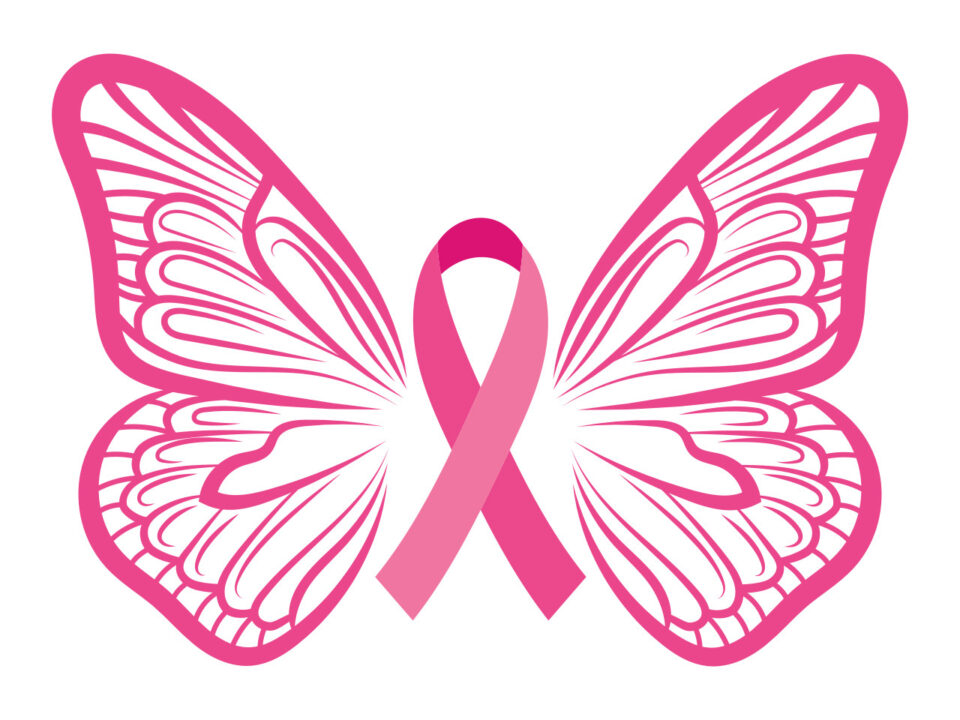
Raising Breast Cancer Awareness
October is Breast Cancer Awareness Month, but what does breast cancer awareness truly mean? There’s a lot more to this month than pink ribbons and marathon runs. Many women who have health insurance are still not on track to get their mammograms as recommended, and others do not have the financial or logistical means to receive the proper healthcare. According to Mary Elizabeth Christian, MD, FACS, it’s important for women as young as 20 years old to start doing annual breast exams, and there are several resources available for those who need them. With regular checkups and self-examinations, you’re taking the right steps towards early detection of breast cancer.
What are the different types of breast cancer?
There are essentially two categories of breast cancer: invasive and non-invasive. “Ductal carcinoma in situ, or DCIS, makes up for 20 percent of breast cancers,” says Dr. Christian. “It is the least invasive and the least aggressive because the cancers are inside the tube system of the breast. Since it doesn’t come in contact with the lymph nodes, it cannot spread to other parts of
the body.”
Then, there are the invasive breast cancers, which have spread to the surrounding breast tissue. The most common forms of invasive breast cancers are invasive ductal carcinoma (IDC), which accounts for the vast majority of breast cancers, and invasive lobular carcinoma (ILC), which is a cancer in the milk gland. Other invasive breast cancers include triple-negative breast cancer, inflammatory breast cancer, paget disease of the breast, angiosarcoma, and phyllodes tumors.
Can men get breast cancer?
Yes! While most breast cancer patients are women (about 240,000 per year), there is a small percentage of male breast cancer patients as well (about 2,700 per year). “Men have the same tissue as women,” says Dr. Christian. “Before babies are born, they all have the same tissue behind the nipple and areola. That tissue becomes breast tissue when stimulated by female hormones, while men’s tissue stays relatively flat. The tissue is always present from birth, but it is less likely to develop cancer without estrogen and progesterone.”
When should you start getting
screened for breast cancer?
“Most women should begin having clinical breast exams around age 20 when they start going to the gynecologist,” Dr. Christian answers. “If you are not high-risk, your first mammogram should be at age 40.”
Those who are considered “high risk” would be those who have received radiation treatment at least 15 years ago and those with a family history of breast cancer. If you have a family history, you should get your first mammogram 5-10 years before the youngest member of your family had breast cancer.
Are self checks necessary?
While the United States Preventative Task Force does not recommend self exams as a routine, it is recommended that women should be aware of their breasts. Dr. Christian argues that you cannot be familiar with your breasts without doing a self exam. “In general, most women should check their breasts starting at their mid-20s about 3-4 times a year,” she says. “I recommend it because women can find a cancer in their breast before they are even eligible for or in between mammogram appointments. Any woman who can find a cancer that doctors have not found should be able to do that. We should encourage women to be aware of their bodies.”
What are some warning signs of breast cancer?
Believe it or not, most breast cancers have no symptoms at all, and patients often feel like their normal, healthy selves. Those who do have symptoms may experience a lump in the breast, which can be painful or painless. Symptoms also include bloody drainage from the nipple, swelling of all or part of the breast, breast or nipple pain, nipple retraction, swollen lymph nodes under the arm or near collar bones, and changes of the breast or nipple skin such as redness, dryness, and flakiness. Some of these symptoms can be benign (non-cancerous), but it’s still good to schedule a checkup with a doctor as soon as you notice any changes so you can get any treatment required.
What are some risk factors for breast cancer?
Another factor of breast cancer that may surprise you is that, for the most part, it’s not a genetic disease. “Eighty-percent of breast cancer patients are the only members of their family that will ever have it,” says Dr. Christian. “Breast cancer is predominantly non-genetic. A lot of women assume they aren’t at-risk if no one in their family has had it, though the vast majority doesn’t have any family history when diagnosed with breast cancer.” Other risk factors include drinking lots of alcohol (more than one drink per day), being overweight after menopause (when estrogen will come from excess fat tissues and blood insulin levels are high), and not being physically active (about 150-300 minutes of exercise per week). So, taking good care of yourself will reduce your risk of breast cancer, but you still need to do that regular breast exam or mammogram.
How can you raise awareness?
“Most awareness comes through women encouraging one another to be aware of their breasts,” Dr. Christian answers. “We talk less about preventative things because our culture is saturated in October with awareness events, but I think raising awareness in your circle of women is the most effective. We are much better at that than we were 50 years ago. Most people are already aware of breast cancer, we’re just missing information about what we can do to find and/or prevent breast cancer. There are actual things you can do yourself to improve risk and to be aware of your personal risk.”
It’s also important to note the resources available to women who do not have access to or the financial means for a regular mammogram. Mary Bird Perkins offers something called Prevention on the Go, a mobile medical clinic that travels through Louisiana and southwest Mississippi that provides free cancer screenings. Through the Louisiana Breast and Cervical Health Program, Woman’s Hospital offers free mammograms, pelvic exams, Pap smears, and more to uninsured women in the state as well. These services are there to protect women regardless of their financial state. Like most cancers, breast cancer can be treatable when it is detected in its early stages. This is why it is imperative for all women to get breast exams annually. And, if you haven’t made your annual OB/GYN appointment yet, make sure to schedule it soon! While all the fundraisers and pink attire in October are still necessary, it’s important to take real action and encourage women to protect themselves.

